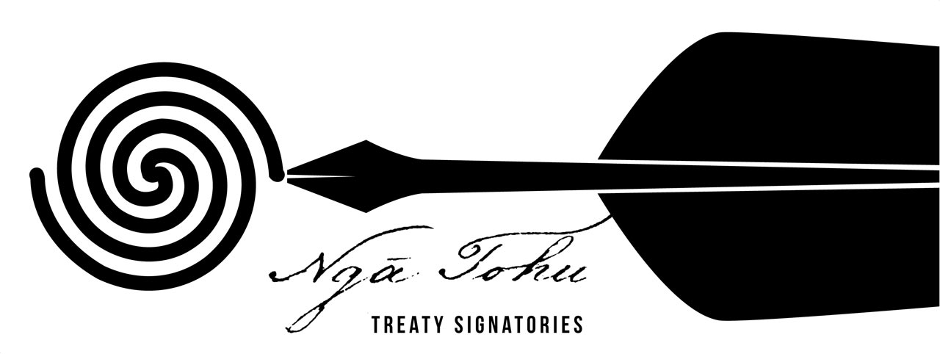Signing
| Signature | Sheet | Signed as | Probable name | Tribe | Hapū | Signing Occasion |
|---|---|---|---|---|---|---|
| 5 | Sheet 1 — The Waitangi Sheet | Hori Kingi Warerahi | Hōri Kīngi Wharerahi | Ngāpuhi | Ngāi Tawake, Ngāti Tautahi, Te Patukeha, Te Uri-o-Ngongo | Waitangi 6 February 1840 |
Wharerahi (also known as Hōri Kīngi, Te Wharerahi, Wharenui or Warenui) was a leading chief of the Ngāi Tawake hapū (subtribe) of Ngāpuhi, based at Waimate in the Bay of Islands. His younger brothers were Rewa, one of Hongi Hika’s chief lieutenants, and Moka. Wharerahi married Tari, the sister of senior Hokianga chiefs Tāmati Wāka Nene and Eruera Maihi Patuone.
Around 1800, while still a young man, Wharerahi took part in a sea battle against Ngāti Wai with other Ngāpuhi chiefs. He and his brother-in-law Patuone intervened to save Wesleyan (Methodist) missionaries from death when their mission was attacked in 1828.
In 1830 he took part in the sale of land at Waimate for a new mission station, since by then his interests lay elsewhere. The following year he was one of 13 to sign a letter to the British King William IV calling for support against the ‘tribe of Marion’ (the French, personified by naval captain Marion du Fresne).
The Reverend Henry Williams, leader of the Waimate mission, described Wharerahi as ‘an excellent character … who is termed the Peace-Maker by the Natives, as he is thus engaged on all occasions.’ [1] Williams’s superior, Samuel Marsden, was therefore disappointed when the chief took part in an 1832 war expedition against Ngāti Whātua. In 1835 Williams met Wharerahi, ‘our venerable friend’, at Whakatīwai on the Firth of Thames. Williams recorded that ‘he spoke like a noble man with considerable dignity and grace and what he said tended to quiet many fears respecting Ngapuhi.’ [2]
Wharerahi and his two brothers signed the 1835 Declaration of Independence. However, in 1840 he disagreed with his brothers by supporting the Crown during the debate on 5 February about signing the Treaty of Waitangi. ‘Is it not good to be in peace? We will have this man as our Governor. What! turn him away! Say to this man of the Queen, Go back! No, no.’ [3] Wharehari signed the Treaty on 6 February 1840.
[1] Missionary Register, 17, 1829, p. 459, http://www.enzb.auckland.ac.nz/document?wid=3055&page=1
[2] Henry Williams, The early journals of Henry Williams, senior missionary in New Zealand of the Church Missionary Society, 1826–40, Pegasus Press, Christchurch, 1961, p. 413, http://nzetc.victoria.ac.nz/tm/scholarly/tei-RogEarl-t1-body-d9.html
[3] Quoted in William Colenso, The authentic and genuine history of the signing of the Treaty of Waitangi, New Zealand, February 5 and 6, 1840, Government Printer, Wellington, 1890, p. 23, http://nzetc.victoria.ac.nz/tm/scholarly/tei-Stout69-t3-body-d2-d1a.html


Community contributions